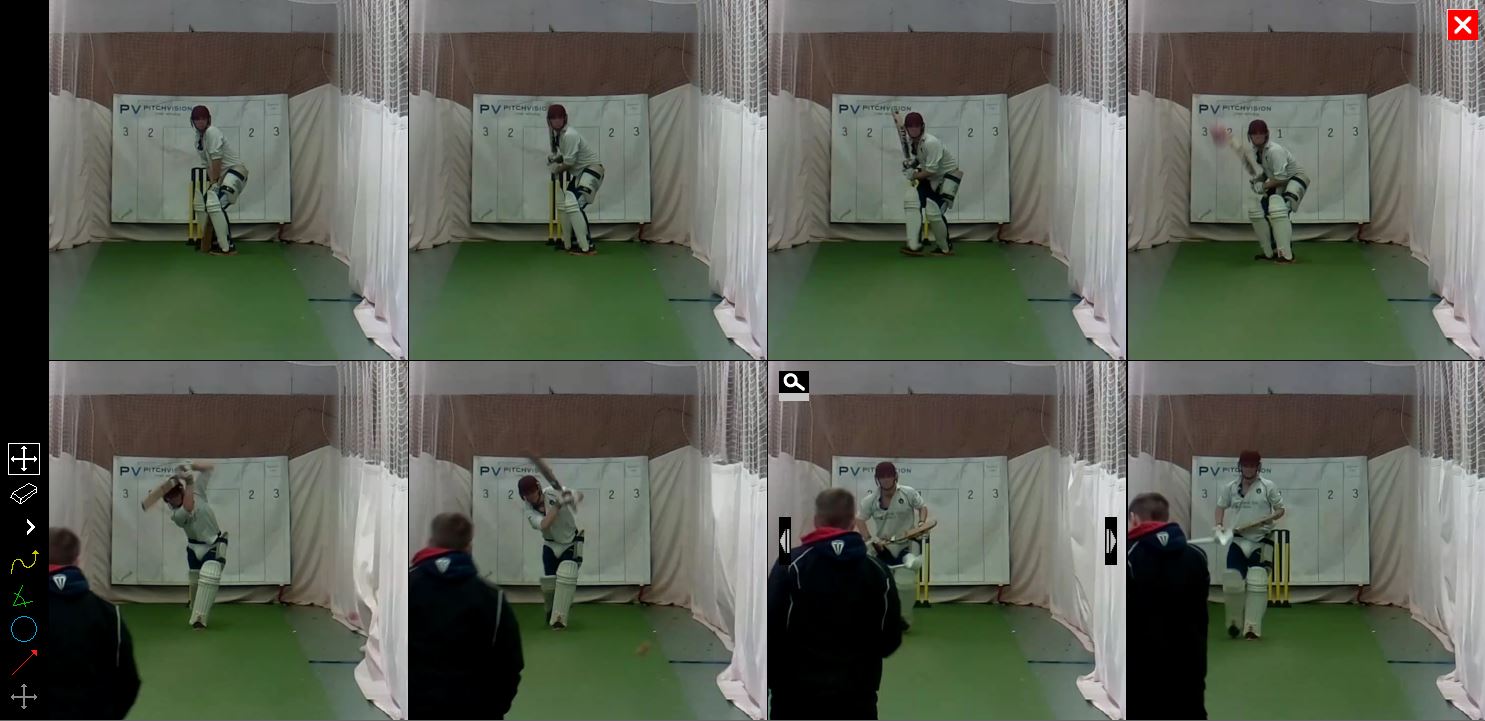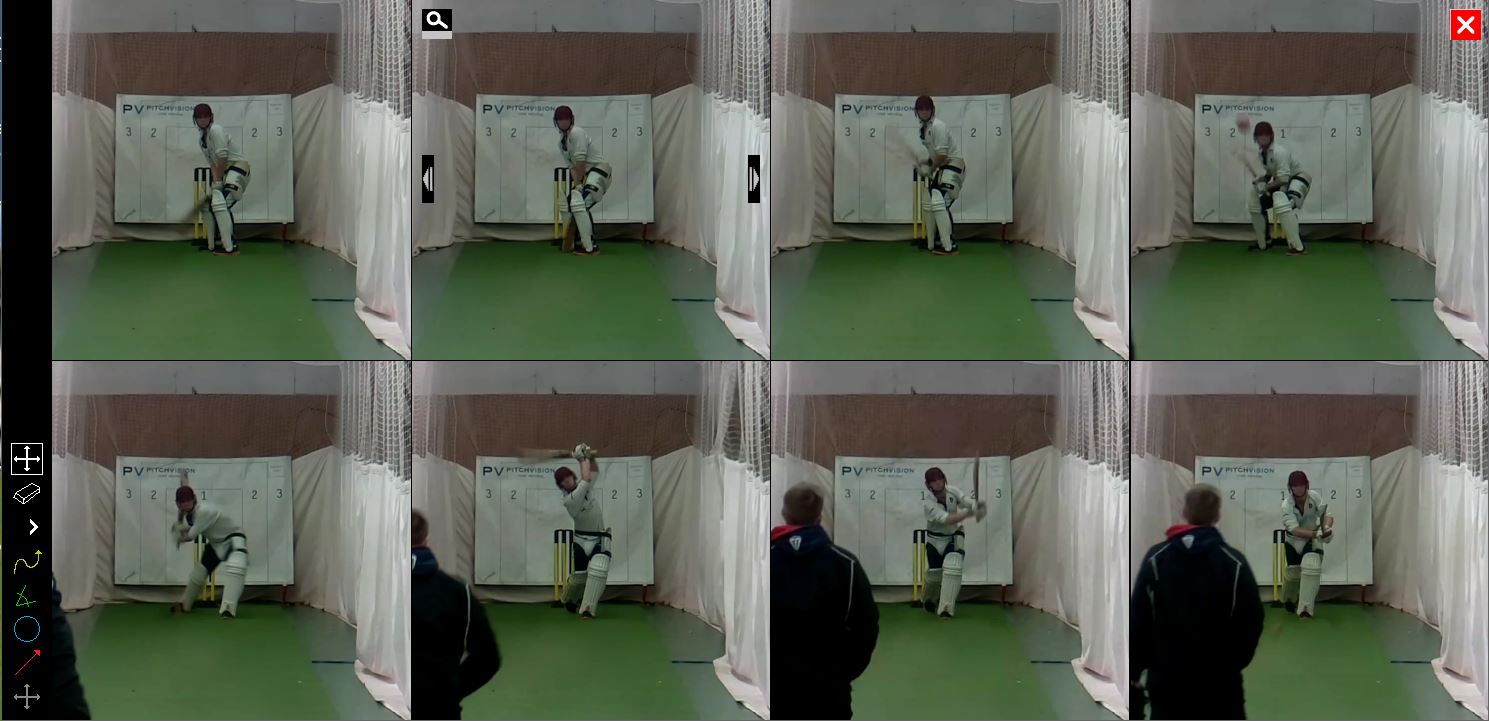Four Ways to Use Your Crease to Upset Bowlers
 When a bowler is in rhythm they are in control, so it’s your job as a batsman to find ways to disrupt that balance.
When a bowler is in rhythm they are in control, so it’s your job as a batsman to find ways to disrupt that balance.
Mostly bowlers find ways to do it to themselves, but you can have an influence in the right circumstances. One simple way to do that is by moving around your crease.
But you have to do it right, so here are four ways to do it, alongside the reasons to get your toes twinkling:
1. Get out of your crease
Moving out of your crease is an aggressive move that upsets the seam bowler’s length. A good length ball is now a half volley. A yorker is a full toss that you can dispatch anywhere on the park.
Plus it has the benefit of intimidating the bowler. You are suddenly bigger; suddenly coming forwards and making them think twice about where to bowl:
The tactic works especially well if you are a front foot player, or you are playing on a slow pitch that requires a lot of driving.
Step out as the bowler enters the delivery stride. Some people prefer to do it early so they can get set at the new position, others prefer to go late and be on the move. Practice both.
With slower seam bowlers you will see the wicketkeeper stand up to counter the move. That’s OK because you can still try the next option.
2. Stand deep in your crease
Standing with both feet inside the crease is also designed to put a bowler off his length as you can now play back to good length balls. It’s especially effective against spinners and slower medium paced bowlers; both of whom hate to get cut and pulled.
Of course you stand a greater risk of LBW, especially against quicker bowlers with the keeper up, so be careful on the pitch you choose. A slow, low one is not the best idea.
It’s also wise to watch your bat and feet as knocking your stumps over is a genuine risk.
3. Exaggerate your trigger move
Another trick to using the crease is a variation of starting deep. This time you start in your normal position but move back and across just before the ball is bowled.
This gives the impression you have “cleared the front leg” even though it’s the back leg you have moved.
From this position you can play any shot: Short balls can be cut or pulled, length balls can be driven on the off or leg side.
It’s a bit more of a risk because you are opening yourself up, so not in the best position. However, by doing that you are giving yourself options without taking a massive chance.
4. Become a moving target
The last option carries the most risk but allows you to hit bowling into gaps at the end of an innings: you move sideways.
Step away to the leg side and aim to hit the ball over mid off or extra cover
Step away to the off side and aim to chip the ball over short fine leg
It’s not easy because it’s premeditated and you are moving away from your guard so you will lose where your stumps are. This means you have to practice it a lot to get right and you also need to save it for situations where you need to score most quickly.
- Login to post comments




Comments
Just look at Pietersen for an example. He stands out of his crease and walks to the offside, and works everything to leg. He must be a nightmare to bowl to, as both bowled and lbw are virtually out of the question.
can you tell me what does cocking of a wrist means
I have found a really useful tactic that I have been using, is to twist the bat around as the bowler is almost into his action, the bowler thinks your trying to reverse sweep him and usually digs it in short leaving an easy pull to the boundary!
Nice idea Leo.
Another tactic against a bowler who is pitching it up is to come down the pitch a couple of times and drive him on the half volley, and then fake coming down the pitch (take a step forward and then take a step back again) and wait for the short ball to pull.
Just letting you guys know, the Sutherland Shire Junior Cricket Association over here in Australia has reproduced this post without crediting you at all - i.e. plagiarised your article.
http://networkedblogs.com/mm7GT
I have batted out of my crease to good effect on typical slow English wickets. Club bowlers can be very accomplished at landing the ball on a length but when forced to pull it back, their swing can be nullified or they simply can not as consistent. I am getting long in the tooth now but I have only recently become excited about the prospect of batting even further down the track or coming down the wicket as the bowler releases (from an already advanced position). If you think about distance and perspective, the bowler will have to bowl a very wide ball to be sure of getting it past you to gain a stumping. I would suggest that this can only be achieved via the wicket keeper moving very wide before the ball is bowled or by the bowler beating the batter for pace. Either way, I can not help thinking that this could be a very effective strategy in the lower levels of club cricket.`
The other thing that I think is interesting is whether having taking guard one should in fact vary your stance with reference to where the bowler releases the ball , (e.g. wide of the crease with one's shoulder).